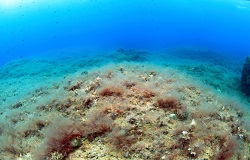What happens when the seafloor runs out of breath?
The environment at the sea bottom is crucial for the lifecycle of many animals. Not only do these animals rely on organic material for consumption, the subsequent waste is then recycled by seafloor life back into the ecosystem, producing new biomass. The rest becomes buried in the seafloor. A recently published study in the journal ‘Science Advances’ by a team researchers from the HYPOX project, has found that when oxygen concentrations in the bottom-water environment are low, less organic matter can be remineralised and so more gets buried into the sea bed, having a faster and longer impact (lasting decades) than previously thought. The journal quotes Gerdhard Jessen from the Max Planck Institute for Marine Microbiology, Germany, as summarising that, ‘The amount of organic matter ending up in the seafloor increases by half when the seafloor is periodically short of oxygen.’ The Black Sea laboratory The HYPOX team took to the waters of the Black Sea, the largest naturally anoxic water body in the world (water depleted of dissolved oxygen) for near perfect outdoor laboratory conditions. The Black Sea evidences stable stratification in a natural gradient of bottom-water oxygen concentrations which ranges from well-oxygenated shallow waters, to variable oxygen conditions, leading to anoxic deeper waters at depths below 160 metres. The study traced specific impacts of hypoxic conditions. For example, lack of oxygen has an impact on seafloor fauna which larger animals, such as worms and mussels, rely on for food and shelter. Through their actions these animals in turn provide smaller seafloor creature with nutrients. When oxygen is in short supply, larger animals often disappear and remineralisation of organic matter arriving at the seafloor becomes chiefly the job of sediment bacteria, which takes a very long time. Consequently, more organic material is removed from the nutrient system and left trapped in the seafloor. This has the knock-on effect of increasing the presence of anaerobic microorganisms which do not reply on oxygen but also produce toxins which further slow down the breakdown of matter, compounding the situation. Detecting timely warning signs Given the ongoing human influence on nutrient cycles along with climate change impacts, incidences of low-oxygen oceanic areas are on the rise around the world and so understanding the biogeochemical processes involved is crucial. Science Advances quotes a senior author of the study, Antje Boetius, as summarising, ‘The Black Sea can teach us many lessons… as it clearly reveals the effects of fluctuating and low oxygen conditions on the ocean ecosystem, causing tremendous changes in the services of the ecosystem to us humans. Investigations as the current one are thus essential in the face of global change, to detect warning signals from the ocean in time.’ For more information please see: CORDIS project page
Countries
Germany



